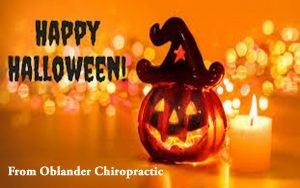Overcome the Fear of Movement After Auto Injury!
 Imagine what happens when you injure your neck in an auto injury…
Imagine what happens when you injure your neck in an auto injury…
Your muscles contract, there’s a burst of pain, and a soreness that makes you want to avoid moving your neck too much or turning too far. You may worry about re-injuring yourself or you may think, “I could do more harm than good by moving my neck.” Unfortunately, not moving your neck after an auto injury can actually be worse for your recovery, especially for people after a car accident.
A new study examined the effects of fear of movement on neck disability and range of motion in 98 patients after a car crash!
While the patients’ injuries ranged in severity, all of the patients had pain for under a month and all were injured in an auto collision. Researchers measured patients’ levels of fear using two different scales. They also examined neck range of motion and degree of neck disability. Patients were evaluated after one, three, and six months after the injury.
Patients who were more afraid to move their neck had more severe neck disability and reduced range of motion. Increased fear also prolonged the symptoms. In contrast, patients with lower levels of fear were more likely recover before the six month follow up.
Maintaining movement after an injury does more than just reduce anxiety. It also ensures that tissues don’t become more tense, restricted or damaged. Chiropractic can help you with recovery, because chiropractic works by restoring the normal movement and function of your neck and back.
Conclusion
If you’ve been in a car crash, don’t wait to get treatment. It’s important to get your spine moving again as soon as possible! Chiropractic can help you on the path to recovery!
Article shared from the following website: https://www.chironexus.net/2017/10/fear-movement-after-auto-injury/

 Anyone with a chronic pain condition like fibromyalgia knows it can be difficult to adhere to a complex set of treatment instructions: physical therapy, medications, creams, journals, the list goes on. We get busy or forget and sometimes don’t comply completely with the treatment, but sooner or later the pain creeps back in. It turns out that regular chiropractic visits can actually help fibromyalgia patients adhere to long-term physical-therapy programs, thereby ensuring that patients receive the full benefits of exercise.
Anyone with a chronic pain condition like fibromyalgia knows it can be difficult to adhere to a complex set of treatment instructions: physical therapy, medications, creams, journals, the list goes on. We get busy or forget and sometimes don’t comply completely with the treatment, but sooner or later the pain creeps back in. It turns out that regular chiropractic visits can actually help fibromyalgia patients adhere to long-term physical-therapy programs, thereby ensuring that patients receive the full benefits of exercise. According to the National Institutes of Health, lower back pain is the second most common form of chronic pain after headaches. Experts estimate that approximately 80% of Americans will seek help for low back pain at some point during their lives. Public health officials and insurers estimate that Americans spend $50 billion each year on treatments that are often ineffective. The standard treatment for lower back pain is to take muscle relaxants, painkillers or anti-inflammatory medications, along with physical therapy and back exercises. However, few medical interventions relieve pain reliably, and continuing to take painkillers on a long-term basis is not advised. Massage, on the other hand, has been found to be an effective way of dealing with back pain on a regular basis.
According to the National Institutes of Health, lower back pain is the second most common form of chronic pain after headaches. Experts estimate that approximately 80% of Americans will seek help for low back pain at some point during their lives. Public health officials and insurers estimate that Americans spend $50 billion each year on treatments that are often ineffective. The standard treatment for lower back pain is to take muscle relaxants, painkillers or anti-inflammatory medications, along with physical therapy and back exercises. However, few medical interventions relieve pain reliably, and continuing to take painkillers on a long-term basis is not advised. Massage, on the other hand, has been found to be an effective way of dealing with back pain on a regular basis. Chiropractic Can Help Asthma, COPD and More…
Chiropractic Can Help Asthma, COPD and More…
 Learning the risk factors of sciatica can help you minimize your risk of developing it. A recent study sheds light onto what makes you more likely to develop sciatica.
Learning the risk factors of sciatica can help you minimize your risk of developing it. A recent study sheds light onto what makes you more likely to develop sciatica.
 With the huge rise in the use of antibiotics over the past 70 years, some pathogens are now becoming resistant to the drugs that once easily eradicated the illnesses these pathogens cause. People who become infected with one of these drug-resistant organisms are at increased risk for longer, more costly hospital stays and are more likely to die from their infection.
With the huge rise in the use of antibiotics over the past 70 years, some pathogens are now becoming resistant to the drugs that once easily eradicated the illnesses these pathogens cause. People who become infected with one of these drug-resistant organisms are at increased risk for longer, more costly hospital stays and are more likely to die from their infection.